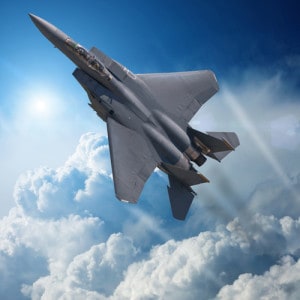
The U.S. Air Force needed the ability to more quickly analyze their growing volume of real-time sensor and situational data during mission-critical situations. Here’s how defense contractor L-3 Communications ComCept helped them to do so.
Industry:
Military Defense and Space
Location:
Rockwall, Texas
Business Opportunity or Challenge Encountered:
L-3 Communications ComCept (L-3 ComCept) is a defense contractor that specializes in systems engineering that provides networking, requirements development, modeling, simulation and communications. The company develops advanced wireless “network-centric warfare” concepts that help enhance use of intelligence, surveillance and reconnaissance assets of the U.S. and its allies. The company specializes in developing sensor networks between platforms in the domains of sea, air, land and space. Machine-to-Machine (M2M) cross-cueing and data fusion networks have been field tested and proven using multiple communications pathways in a multiple level security environment.
L-3 ComCept designed and developed the Network Centric Collaborative Targeting (NCCT) system, a U.S. Air Force targeting system intended to integrate various airborne and ground-based data-collection systems to better track, locate and target ground contacts for improved battlefield situational awareness and identification of targets for action. Use cases involve battlefield situational and threat analysis.
However, the company’s existing systems were proving too slow to develop actionable battlefield insight in the face of the growing volume of sensor and situational data. The U.S. Air Force was seeking a system that improved the speed and accuracy of their battlefield situational and threat analysis capabilities as well as a better network with similar systems in U.S. Army and Navy.
The Air Force sought to improve the capture of streaming sensor data for increased accuracy within an existing system and reduce analyst time for decision support during mission-critical situations.
NCCT can successfully locate and identify critically important ground threats including both time-critical targets and targets prioritized by the commander. These threats limited exposure time and used other tactics similar to those observed in recent wars to prevent being targeted. However, through its coordinated and collaborative sensor networking techniques, NCCT provided targeting data to decision makers inside of the deception timelines.
L-3 ComCept leads the NCCT industry team responsible for design and development of network-centric collaborative sensing, communications and real-time networking of multiple airborne intelligence, surveillance and reconnaissance assets. The intent is to develop an open, network-centric architecture and software design that horizontally integrates air, space and ground assets through M2M exchanges. In this manner, NCCT more efficiently, accurately and quickly supports time-sensitive and prioritized targeting operations.
NCCT integrates common software applications on all sensor platforms to change the way they gather, process and report information, with the goal of providing a common, correlated picture to all network participants. All of the participating platforms and ground stations can exchange data as well as cue other participants to coherently collect and reveal information otherwise unreported by individual stove-piped platforms. By efficiently networking and synchronizing sensors in real-time and combining multiple types of sensor detections, NCCT increases the probability of detection and identification of fixed, stationary or moving surface targets.
How This Business Opportunity or Challenge was Met:
To meet the Big Data challenge, L-3 Comcept implemented a federated (i.e., complete) view of distributed multiagency systems, enabling analytics of all types of data including relationship discovery, pattern/path-matching and time-series analysis capabilities to improve intelligence and offer real-time decision support. The database, Objectivity/DB, is at the heart of the NCCT Fusion Engine supporting the NCCT application. The new system stores and manages vast amounts of disparate information, performing data fusion from geospatial and sensor data from the NCCT sensor network.
Challenges in Implementing this Technology or Solution:
The main challenge was developing a reliable, scalable repository for the wide range of complex data types found in this type of mission-critical application. Project managers were also challenged to meet the need for quick management of vast amounts of disparate information.
Measurable/Quantifiable and “Soft” Benefits from This Initiative:
A real-time view of data across multiple agency systems has improved accuracy and response times by up to 90 percent in life-threatening, mission-critical situations. The new system also reduced target acquisition time by more than 90 percent without any reduction in accuracy. Together, with more seamless integration with other systems, this dramatically improved the U.S. Air Force’s ability to integrate and analyze the growing volume of sensor and situational data.
Want more on this topic?
Research from Gartner: Real-Time Analytics with the Internet of Things
From the Center to the Edge: The IoT Decentralizes Computing
For Manufacturers, IoT Means the ‘Internet of Tools’
Becoming an ‘Always On’ Smart Business
Liked this article? Share it with your colleagues using the links below!





























